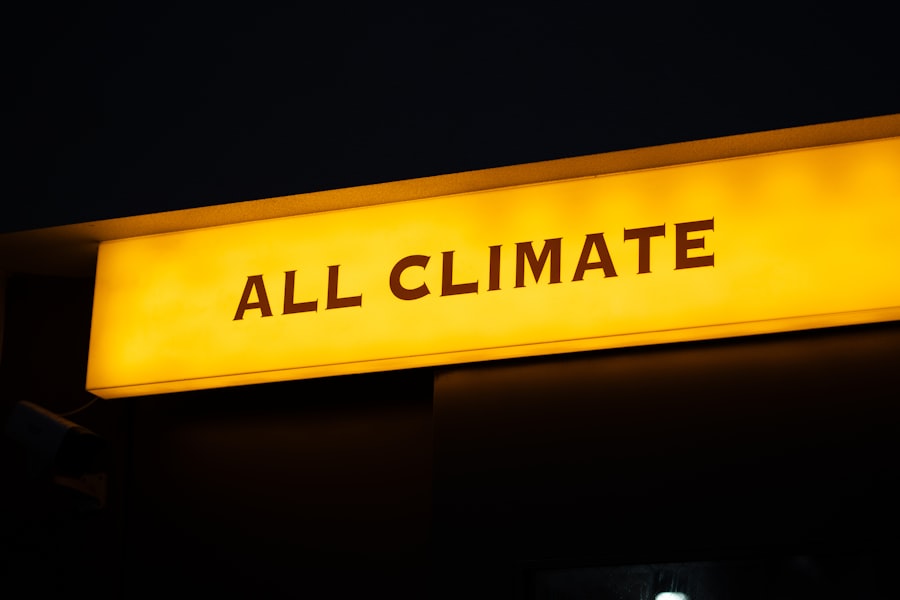Climate change has emerged as one of the most pressing challenges of the 21st century, influencing various sectors, including global trade. The intricate web of international commerce is increasingly affected by environmental shifts, which are altering production patterns, consumption behaviors, and trade dynamics. As temperatures rise and weather patterns become more erratic, the implications for trade are profound.
The interconnectedness of economies means that changes in one region can reverberate across the globe, affecting supply chains, market access, and economic stability. The urgency of addressing climate change is underscored by the growing frequency of extreme weather events, such as hurricanes, droughts, and floods. These phenomena not only disrupt local economies but also have far-reaching consequences for global trade networks.
As nations grapple with the realities of climate change, they must also consider how to adapt their trade policies and practices to mitigate its effects. The intersection of climate change and global trade presents both challenges and opportunities, necessitating a comprehensive understanding of how these two forces interact.
Key Takeaways
- Climate change is impacting global trade through changes in supply chain and logistics, agricultural trade, maritime trade, and disruption of trade routes.
- Rising sea levels are affecting maritime trade, leading to the need for adaptation and resilience measures in the industry.
- Economic implications of climate change on trade include increased costs, supply chain disruptions, and potential shifts in comparative advantage for different regions.
- Policy responses to climate change and trade are crucial for mitigating the negative impacts and creating opportunities for sustainable trade practices.
- Technological innovations are being developed to address the challenges of climate change on global trade, offering potential solutions for a more sustainable future.
Changes in Supply Chain and Logistics
The impact of climate change on supply chains and logistics is becoming increasingly evident as businesses strive to adapt to new environmental realities. Disruptions caused by extreme weather events can lead to delays in production and transportation, resulting in significant economic losses. For instance, hurricanes can halt shipping operations at major ports, while droughts can affect agricultural output, leading to shortages and increased prices.
Companies are now recognizing the need for more resilient supply chains that can withstand these disruptions. In response to these challenges, many businesses are re-evaluating their logistics strategies. This includes diversifying suppliers to reduce dependency on a single source and investing in more sustainable transportation methods.
The shift towards greener logistics not only helps mitigate the impact of climate change but also aligns with the growing consumer demand for environmentally responsible practices. By adopting innovative solutions such as electric vehicles and optimizing delivery routes, companies can enhance their operational efficiency while contributing to a reduction in greenhouse gas emissions.
Impact on Agricultural Trade

Agricultural trade is particularly vulnerable to the effects of climate change, as shifts in temperature and precipitation patterns directly influence crop yields. Regions that have traditionally been agricultural powerhouses may find their productivity compromised due to changing climatic conditions. For example, areas that rely heavily on irrigation may face water shortages, while others may experience increased pest infestations due to warmer temperatures.
These changes can lead to fluctuations in food supply and prices, impacting both producers and consumers. Moreover, the implications for global agricultural trade extend beyond local markets. As countries grapple with food security issues stemming from climate change, they may impose export restrictions or tariffs to safeguard their domestic supplies.
This can create tensions in international trade relations and lead to increased volatility in food prices on a global scale. To navigate these challenges, countries must collaborate on sustainable agricultural practices and invest in research to develop climate-resilient crops that can withstand changing environmental conditions.
Rising Sea Levels and Maritime Trade
| Country | Port | Impact of Rising Sea Levels |
|---|---|---|
| United States | Port of Los Angeles | Increased risk of flooding and infrastructure damage |
| China | Port of Shanghai | Threat to port operations and coastal infrastructure |
| Netherlands | Port of Rotterdam | Investments in flood protection and adaptation measures |
| Japan | Port of Tokyo | Concerns about coastal erosion and storm surges |
Rising sea levels pose a significant threat to maritime trade, which is crucial for the movement of goods across the globe. Coastal cities that serve as major shipping hubs are at risk of flooding and erosion, jeopardizing port infrastructure and operations. As sea levels continue to rise, ports may need to invest heavily in adaptation measures, such as building sea walls or relocating facilities further inland.
These investments can be costly and may lead to increased shipping fees that are ultimately passed on to consumers. Additionally, the changing landscape of maritime trade routes is becoming apparent as some areas become less navigable due to rising waters while others may open up new pathways. The Arctic region, for instance, is experiencing melting ice caps that could allow for shorter shipping routes between Europe and Asia.
While this presents opportunities for faster transit times, it also raises concerns about environmental degradation and geopolitical tensions over newly accessible territories. The maritime industry must balance these opportunities with the need for sustainable practices that protect fragile ecosystems.
Disruption of Trade Routes
Climate change has the potential to disrupt established trade routes significantly, leading to increased costs and delays in the movement of goods. Extreme weather events such as hurricanes or typhoons can render key shipping lanes impassable, forcing vessels to reroute or delay shipments altogether. This unpredictability can create a ripple effect throughout global supply chains, affecting everything from raw material availability to final product delivery.
Furthermore, as certain regions become more susceptible to climate-related disruptions, businesses may need to reconsider their logistics strategies entirely.
While these adjustments may help mitigate some risks associated with climate change, they also require careful planning and investment in infrastructure that can withstand future environmental challenges.
Economic Implications of Climate Change on Trade

The economic implications of climate change on global trade are multifaceted and far-reaching. As countries face increasing costs associated with climate adaptation and disaster recovery, their ability to engage in international trade may be compromised. For instance, nations heavily reliant on exports may find themselves at a disadvantage if their production capabilities are hindered by climate-related disruptions.
This could lead to a decline in economic growth and increased unemployment rates in affected regions. Moreover, the shifting landscape of global trade due to climate change may exacerbate existing inequalities between developed and developing nations. Wealthier countries often have more resources to invest in adaptation measures and technological innovations, while poorer nations may struggle to cope with the impacts of climate change on their economies.
This disparity can lead to tensions in international trade negotiations as countries advocate for policies that protect their interests while addressing the broader challenges posed by climate change.
Policy Responses to Climate Change and Trade
In light of the challenges posed by climate change, policymakers around the world are increasingly recognizing the need for coordinated responses that address both environmental sustainability and trade dynamics. International agreements such as the Paris Agreement aim to establish frameworks for reducing greenhouse gas emissions while promoting sustainable development. These agreements often include provisions that encourage countries to adopt greener trade practices and invest in renewable energy sources.
At the national level, governments are implementing policies that incentivize businesses to adopt sustainable practices within their supply chains. This includes offering tax breaks for companies that invest in green technologies or providing grants for research into climate-resilient agricultural practices. By fostering an environment conducive to sustainable trade, policymakers can help mitigate the adverse effects of climate change while promoting economic growth.
Opportunities for Sustainable Trade Practices
Despite the challenges posed by climate change, there are also significant opportunities for businesses to adopt sustainable trade practices that benefit both the environment and their bottom line.
This shift towards sustainable practices can encompass various aspects of trade, from sourcing materials responsibly to reducing waste throughout the supply chain.
Moreover, collaboration among businesses, governments, and non-governmental organizations can lead to innovative solutions that promote sustainable trade practices on a larger scale. Initiatives such as fair trade certification or carbon offset programs encourage companies to take responsibility for their environmental impact while supporting local communities. By embracing these opportunities, businesses can not only contribute to mitigating climate change but also enhance their reputation and long-term viability in a rapidly evolving global market.
Technological Innovations in Response to Climate Change
Technological innovations play a crucial role in addressing the challenges posed by climate change on global trade. Advances in renewable energy technologies, such as solar and wind power, are enabling businesses to reduce their carbon footprints while maintaining productivity levels. Additionally, innovations in transportation logistics—such as electric vehicles and automated supply chain management systems—are helping companies optimize their operations while minimizing environmental impact.
Furthermore, digital technologies are transforming how businesses approach sustainability within their supply chains. Blockchain technology, for example, allows for greater transparency in sourcing practices by providing verifiable records of product origins and production methods. This transparency not only helps companies ensure compliance with sustainability standards but also builds trust with consumers who are increasingly concerned about ethical sourcing practices.
Case Studies of Climate Change’s Impact on Global Trade
Several case studies illustrate the profound impact of climate change on global trade dynamics. One notable example is the 2011 Thailand floods, which severely disrupted global supply chains for electronics manufacturing. Major companies faced production delays due to flooded factories and transportation networks, leading to significant financial losses and increased prices for consumers worldwide.
This incident highlighted the vulnerability of interconnected supply chains to climate-related disruptions. Another case study involves the agricultural sector’s response to changing climatic conditions in sub-Saharan Africa. Many countries in this region have experienced prolonged droughts that have devastated crop yields and threatened food security.
In response, governments and NGOs have implemented programs aimed at promoting climate-resilient farming practices and improving access to water resources. These initiatives not only help mitigate the impacts of climate change but also enhance agricultural productivity and strengthen local economies.
Conclusion and Future Outlook for Global Trade in the Face of Climate Change
As climate change continues to reshape the landscape of global trade, it is imperative for businesses, governments, and international organizations to work collaboratively towards sustainable solutions. The challenges posed by environmental shifts require innovative approaches that prioritize resilience while promoting economic growth. By embracing sustainable practices and investing in technological advancements, stakeholders can navigate the complexities of a changing world.
Looking ahead, the future of global trade will likely be characterized by a greater emphasis on sustainability and adaptability. Companies that proactively address climate-related risks will be better positioned to thrive in an increasingly competitive marketplace. Moreover, as consumers become more aware of the environmental impact of their purchasing decisions, businesses will need to align their practices with evolving expectations for sustainability.
Ultimately, the intersection of climate change and global trade presents both challenges and opportunities that will shape the future economic landscape for generations to come.
In recent years, the impact of climate change on global trade has become an increasingly pressing issue, as extreme weather events and shifting climate patterns disrupt supply chains and alter trade routes. A related article that delves into the broader implications of climate change on various sectors can be found on MyGeoQuest. This article provides insights into how climate change is reshaping economic landscapes and influencing trade policies worldwide. For more detailed information, you can read the article by visiting MyGeoQuest.
WATCH NOW! Unlocking Disaster: 7 Choke Points That Could Fracture Our Connected World Overnight
FAQs
What is climate change?
Climate change refers to significant and long-term changes in the Earth’s climate, including changes in temperature, precipitation, and wind patterns. These changes are largely attributed to human activities, such as the burning of fossil fuels and deforestation, which release greenhouse gases into the atmosphere.
How does climate change impact trade?
Climate change can impact trade in various ways, including disrupting supply chains, affecting agricultural production, and increasing the frequency and severity of extreme weather events. These impacts can lead to decreased productivity, increased costs, and disruptions in the global flow of goods and services.
What are the specific impacts of climate change on trade?
Specific impacts of climate change on trade include reduced agricultural yields, increased transportation costs due to extreme weather events, disruptions in shipping routes, and changes in consumer demand for certain products. These impacts can have far-reaching effects on global trade patterns and economic stability.
How can businesses adapt to the impacts of climate change on trade?
Businesses can adapt to the impacts of climate change on trade by implementing sustainable practices, diversifying supply chains, investing in climate-resilient infrastructure, and developing innovative technologies to mitigate the effects of climate change. Additionally, businesses can collaborate with governments and other stakeholders to develop and implement climate change adaptation strategies.
What role do international agreements play in addressing the impact of climate change on trade?
International agreements, such as the Paris Agreement, play a crucial role in addressing the impact of climate change on trade by setting targets for reducing greenhouse gas emissions, promoting sustainable development, and providing support for developing countries to adapt to the effects of climate change. These agreements also facilitate cooperation and coordination among countries to address the global challenges posed by climate change.
